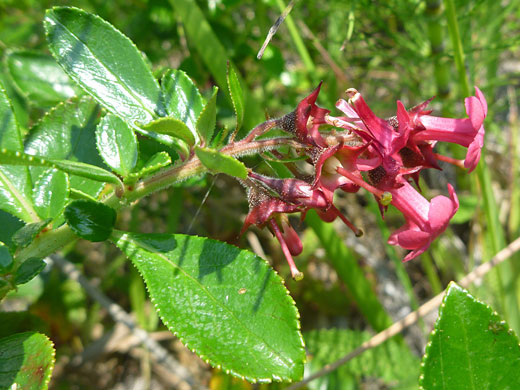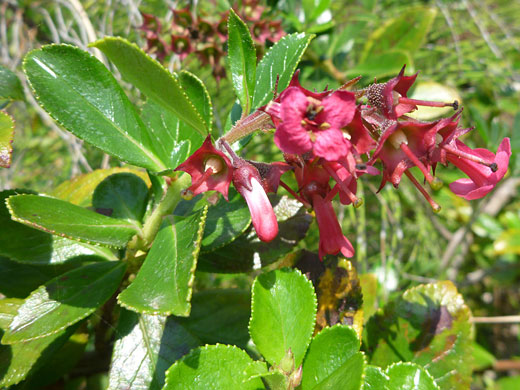Common name:
Redclaws
Family:
Scientific name:
Escallonia rubra
Main flower color:
Range:
Small areas of coastal Oregon and north California
Height:
Up to 4 feet
Habitat:
Roadsides, beach margins, below 100 feet
Leaves:
Elliptic to obovate, up to 3 inches long and 1.3 inches wide, with toothed edges
Season:
July to October
Escallonia rubra originates in Argentina and Chile, and occurs as an introduced species in a few coastal areas of south Oregon and northwest California; found right beside the ocean, along roads, beaches and bluffs. This a shrub-like plant with stout, much branched, reddish green stems which have a dense covering of short white hairs and (longer) stalked glands. The bright green leaves are quite thick, hairless, with shiny, glandular surfaces and small, regular teeth along the edges. Leaf tips can be pointed or somewhat rounded.
The inflorescence is a terminal cluster of between 4 and 40 flowerheads. Flowers are supported by a red/purple calyx, glandular and hairy, which extends to five pointed lobes. The tubular corolla also opens to five lobes, rounded at the apex. The flower center contains five brown-topped stamens and a brownish stigma, not exserted.
The inflorescence is a terminal cluster of between 4 and 40 flowerheads. Flowers are supported by a red/purple calyx, glandular and hairy, which extends to five pointed lobes. The tubular corolla also opens to five lobes, rounded at the apex. The flower center contains five brown-topped stamens and a brownish stigma, not exserted.
All Contents © Copyright The American Southwest | Comments and Questions | Contribute | Site Map




